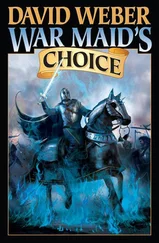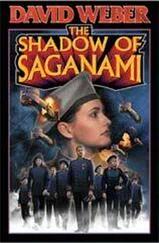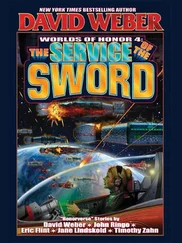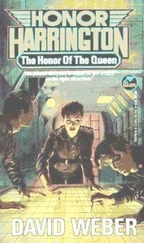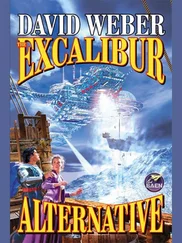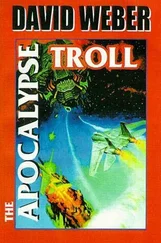David Weber - The Short Victorious War
Здесь есть возможность читать онлайн «David Weber - The Short Victorious War» весь текст электронной книги совершенно бесплатно (целиком полную версию без сокращений). В некоторых случаях можно слушать аудио, скачать через торрент в формате fb2 и присутствует краткое содержание. Год выпуска: 1998, ISBN: 1998, Издательство: Baen Books, Жанр: Космическая фантастика, на английском языке. Описание произведения, (предисловие) а так же отзывы посетителей доступны на портале библиотеки ЛибКат.
- Название:The Short Victorious War
- Автор:
- Издательство:Baen Books
- Жанр:
- Год:1998
- ISBN:0671875965
- Рейтинг книги:3 / 5. Голосов: 1
-
Избранное:Добавить в избранное
- Отзывы:
-
Ваша оценка:
- 60
- 1
- 2
- 3
- 4
- 5
The Short Victorious War: краткое содержание, описание и аннотация
Предлагаем к чтению аннотацию, описание, краткое содержание или предисловие (зависит от того, что написал сам автор книги «The Short Victorious War»). Если вы не нашли необходимую информацию о книге — напишите в комментариях, мы постараемся отыскать её.
The Short Victorious War — читать онлайн бесплатно полную книгу (весь текст) целиком
Ниже представлен текст книги, разбитый по страницам. Система сохранения места последней прочитанной страницы, позволяет с удобством читать онлайн бесплатно книгу «The Short Victorious War», без необходимости каждый раз заново искать на чём Вы остановились. Поставьте закладку, и сможете в любой момент перейти на страницу, на которой закончили чтение.
Интервал:
Закладка:
Chase armaments had to be squeezed into the flared ends of the spindle, and there was little room, relatively speaking, into which to fit them. As a general rule, a light warships chasers might represent as much as a third of the power of its broadsides, but the proportion fell as the size of the ship grew. Truly enormous ships, like superdreadnoughts, might mount broadside weapons on as many as four or five separate decks, and their length was as much as seven or even eight times their maximum beam, which meant that each "gundeck" offered twenty-five to thirty times the weapons volume available to their chasers.
The topsides and bottoms of warships were not armed, though a portion of those areas were used to mount various sensor and communication arrays. Some navies experimented with vertically mounted missile tubes in an effort to recoup that "wasted space," but with generally unsatisfactory results. A capital ship's impeller wedge might be as much as a hundred kilometers "wide," and no missile could activate its own impeller drive inside its mother ships drive perimeter lest its wedge impinge upon that of the launching ship. Since the interference between them would have vaporized the missile drive (and the rest of the missile with it), any missile's initial flight path had to be a straight line, directly away from the ship and ninety to a hundred kilometers in length, which no practical vertically-launched weapon could attain.
Broadside missile tubes incorporated powerful mass drivers to get the weapon outside the warship's wedge quickly, and, in theory, a vertical launcher could have used a mass driver with an internally curved path to throw a missile out a top-mounted tube at an angle which would clear the wedge. In practice, it was impossible to align the missile flight path precisely enough with a sidewall gunport, and the additional mass required by the longer, curved mass driver was prohibitive, and efforts to devise "swim out" missiles which dispensed with mass drivers and relied on conventional thrusters for their initial acceleration proved universally disappointing.
All normal-space tactics and naval doctrine had evolved around the limitations and capabilities described above. Obviously, the bow or stern of a ship, which could not be protected by a sidewall, represented its most vulnerable aspect, and the ideal of virtually all normal-space tactics was to "cross the enemy's T" and gain a "down the throat" or "up the kilt" shot with one's full broadside while he could reply only with his chase armament. Since both sides knew this, however, opportunities to cross the "T" were rare even in single-ship duels and almost unheard of in fleet engagements.
The most common tactical situation was the broadside duel, in which both ships brought the full power of one broadside to bear upon the other. Even here, however, a canny captain never forgot the impenetrability of his impeller wedge. Whenever possible, he "rolled ship" to take fire—especially missile fire—which he could not avoid against that powerful defense. At close range, lighter ships, which were much faster on the helm due to their lower masses, often resembled whirling dervishes as they spun back and forth in an effort to bring their own weapons to bear and then snap back around to deny their opponent a target for return fire.
Such energetic tactics, however, were less practical for fleet engagements. First, capital ships, which could mass up to 8,500,000 tons, were necessarily slower when it came to rolling ship, but, more important even than that, was the development of the formation known as "the wall of battle."
Since broadside fire was the only practical way to bring maximum fire to bear upon an enemy, admirals evolved the tactic of stacking their capital ships both vertically and in line at the smallest intervals their impeller wedge safety perimeters permitted. This produced the characteristic "wall"—an often enormous formation, one ship wide, which might extend for thousands of kilometers vertically and ahead and astern along the fleet's base vector. This was scarcely a maneuverable formation, but at least it allowed maximum fire to be brought to bear.
Unfortunately, the tactical formalism fostered by the wall of battle also meant that major fleet engagements tended to be frustratingly indecisive unless one side was tied down by the need to defend a target which it simply could not abandon, like a populated star system. If one fleet took the worst of it and had no overriding strategic reason to fight to the death, its commander simply turned the units of his wall up on their sides, presenting only the roofs or floors of their wedges to the enemy, and then bent all his efforts on breaking away. An opponent who turned towards him to close the range and prevent him from disengaging (the only possible counter) might actually cross its own "T", permitting his ships to roll back and fire their broadsides down the throat of the pursuing fleet with deadly effect.
On the rare occasions when warships clashed in hyper-space, the tactical environment was radically different. As a rule, starships in hyper tend to stay within the area of a grav wave, using their Warshawski sails to draw acceleration and deceleration from the wave, and normal impeller drives (including those of missiles) cannot be used within the area of a grav wave.
The Warshawski sail is essentially a highly modified and very powerful impeller stress band projected in the form of a disk at right angles to the hull, not as a wedge above and below it. The sail, which is just as impenetrable as an impeller wedge, extends for three hundred kilometers (as much as five hundred for really large vessels) in all directions. This not only makes chase armaments even more important but also deprives the warship of the protection of its wedge against fire from "above" or "below." Indeed, it deprives a ship even of its sidewalls, for there are no roof and floor for the sidewall to stitch together.
One might expect admirals to avoid grav waves if forced to fight in hyper, but doing so is tantamount to breaking off the action. The reason is simple: a ship under Warshawski sail can pull almost ten times the acceleration it could under impeller drive. Withdrawing from the wave, then, allows a fleet which remains within it to run away with relative impunity.
A few navies have experimented with the idea of mounting the sidewall bubble generators used to generate 360° "sidewalls" around fixed fortifications in their capital ships for use in hyper-space engagements, but the sheer mass of the system is self-defeating. A ship so equipped has an enormous advantage in hyper, but the volume consumed by the generators cuts deeply into that available for weapons, which places the same vessel at an even greater disadvantage in normal-space combat. Since n-space combat is the rule and hyper-space combat is the exception, no navy has ever built a major class of warship with bubble generators.
Because warships in hyper are stripped of both their major passive defense against broadside fire and their longest ranged offensive weapons, conventional tactical wisdom calls for a head-on engagement, the exact reverse of n-space warfare. The idea is that the area of the ship ahead or astern of the impenetrable Warshawski sail is much smaller than its unprotected length, and that the reduction in target area (and hence vulnerability) more than compensates for any loss in firepower.
In terms of maneuver once combat is joined in hyper, the advantage of "altitude" can become even more crucial than "crossing the T" in n-space battles. If a portion of one fleet can curl "over" or "under" Us opponent, it can fire down (or up) upon the unarmed topsides or bottoms of enemy snips without receiving return fire.
Moreover, rolling ship is not an effective way to break off action under such circumstances, since there is no impeller wedge to hide behind. Obviously, then, any admiral engaged from more than one bearing in hyper-space is in serious trouble.
Читать дальшеИнтервал:
Закладка:
Похожие книги на «The Short Victorious War»
Представляем Вашему вниманию похожие книги на «The Short Victorious War» списком для выбора. Мы отобрали схожую по названию и смыслу литературу в надежде предоставить читателям больше вариантов отыскать новые, интересные, ещё непрочитанные произведения.
Обсуждение, отзывы о книге «The Short Victorious War» и просто собственные мнения читателей. Оставьте ваши комментарии, напишите, что Вы думаете о произведении, его смысле или главных героях. Укажите что конкретно понравилось, а что нет, и почему Вы так считаете.


